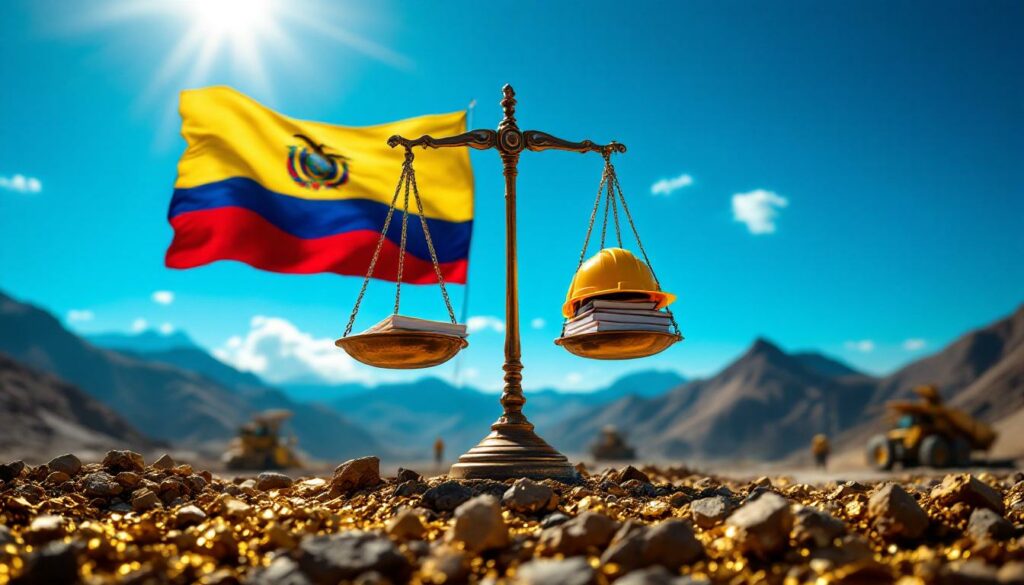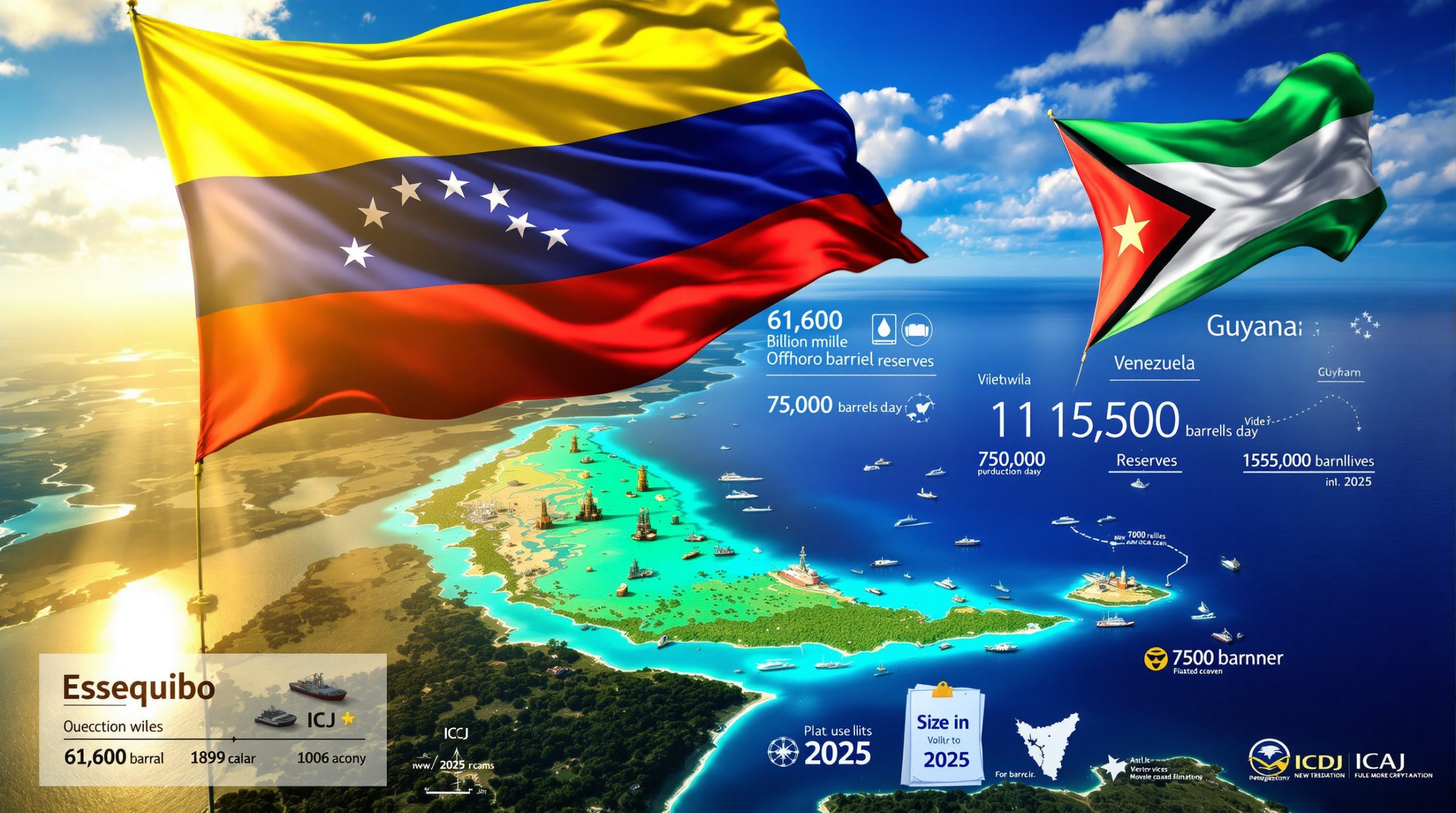Why is Ecuador's Mining Industry Fighting a New Government Fee?
Ecuador's mining sector is in turmoil following the introduction of a controversial government fee that industry representatives claim threatens the future of mineral exploration importance in the country. The dispute has escalated to the Constitutional Court, pitting mining companies against regulators in a battle that could reshape Ecuador's resource development landscape for years to come.
Understanding Ecuador's Controversial Mining Fee
The core of this dispute centers on a new mining fee announced by the Ecuadorian government in June 2025. This regulatory measure has quickly become a flashpoint between the government and mining companies operating throughout the country.
Mining industry representatives have formally challenged the fee, filing a cancellation request with Ecuador's Constitutional Court. The mining chamber characterizes the fee as essentially a "tax that will stymie exploration" activities nationwide, arguing it creates an untenable financial burden for companies, particularly smaller operators.
"The issue goes beyond simple taxation—it's about Ecuador's competitiveness in the global mining landscape," explains María Eulalia Silva, head of Ecuador's mining chamber. "Our members see this as an existential threat to their operations in the country."
The timing of this fee is particularly contentious as it comes shortly after Ecuador had reopened its mining registry in early 2025, ending a seven-year freeze that had previously restricted new exploration activities. This reopening had initially signaled what appeared to be a more welcoming approach to mining industry evolution.
How Does Ecuador's Government Justify the New Mining Fee?
Energy and Mines Minister Ines Manzano has strongly defended the measure, arguing that it will ultimately benefit the mining industry by generating approximately $229 million annually. According to government statements, these funds would be directed specifically to ARCOM, Ecuador's mining regulatory authority.
"The measure will benefit the industry by raising funds to counter informal mining," Manzano stated in a recent press conference. "This is not simply about revenue generation—it's about creating the regulatory infrastructure necessary to combat illegal operations that undermine legitimate mining activities."
The government's position centers on the need to address a growing crisis of illegal mining operations that have flourished in Ecuador's resource-rich regions. These illicit operations typically operate without environmental controls, safety standards, or tax compliance.
Disclaimer: The information provided regarding the government's revenue projections is based on official statements and has not been independently verified by financial analysts. Actual revenue generation may vary based on implementation factors and industry responses.
Why is Illegal Mining a Growing Concern in Ecuador?
The severity of Ecuador's illegal mining problem became tragically apparent in May 2025 when 11 soldiers were massacred while attempting to dismantle an illegal gold mining camp in the Amazon region. This incident highlighted the dangerous nexus between illegal mining operations and organized crime networks.
Security forces report that many of these illegal operations have direct connections to narcotics trafficking networks, which use mining sites for money laundering and territorial control. The combination of valuable minerals and remote locations creates perfect conditions for criminal enterprises to flourish.
Beyond security concerns, illegal mining has devastated Ecuador's fragile ecosystems:
- Water contamination: Unregulated use of mercury and cyanide in gold processing
- Deforestation: Clearance of primary rainforest for mining access
- Habitat destruction: Disruption of critical wildlife corridors and protected areas
- Indigenous impacts: Encroachment on traditional territories and community resources
These environmental impacts often create secondary social crises, including:
- Displacement of local communities
- Health problems from contaminated water sources
- Increased violence and exploitation in mining regions
- Corruption of local officials and security forces
What Impact Could the Fee Have on Ecuador's Mining Sector?
According to industry representatives, the proposed fee structure would disproportionately impact junior mining investments—the smaller firms typically responsible for early-stage mineral discovery and development. María Eulalia Silva has stated that some exploration firms would face fee payments exceeding their total market value.
"For many junior miners operating on tight capital constraints, these fees would essentially make continued operations financially impossible," notes a recent mining chamber statement. "The fee structure fails to account for the different stages of mining development and the vastly different financial capabilities of companies at each stage."
This financial pressure comes at a critical time for Ecuador's mining development. After reopening the mining registry, the country had been positioning itself as an emerging destination for exploration investment. Industry representatives now warn this progress could be reversed.
The mining chamber predicts severe consequences if the fee is implemented as designed:
- Immediate suspension of exploration activities by junior miners
- Withdrawal of international investment capital from Ecuador's mining sector
- Reallocation of exploration budgets to neighboring countries with more favorable regulations
- Long-term reduction in mineral discovery and development pipeline
"This fee would simply remove Ecuador from the investment destination map in the region," Silva warned in a public statement addressing the controversy.
What's at Stake for Ecuador's Economic Development?
Ecuador possesses significant undeveloped gold and copper deposits that could contribute substantially to the country's economic future. Geological surveys indicate the country may hold some of South America's most promising untapped mineral resources, particularly copper reserves that are increasingly valuable in the global transition to renewable energy technologies.
The mining sector represents a potential economic cornerstone for Ecuador, offering:
- Employment generation: Both direct mining jobs and indirect supply chain positions
- Tax revenue: Royalties and corporate taxes from production
- Infrastructure development: Roads, power, and telecommunications improvements in remote regions
- Foreign direct investment: Capital inflows for project development
- Export diversification: Reducing dependence on oil exports
However, realizing these benefits requires striking a delicate balance between regulation and investment attraction. Too restrictive mining regulatory framework risk driving away the capital needed for development, while inadequate oversight enables illegal operations and environmental damage.
"Ecuador stands at a crossroads," explains regional mining analyst Carlos Mendoza. "The country has extraordinary geological potential but must create the right investment climate to translate that potential into economic reality while protecting its natural resources."
How Will the Legal Battle Unfold?
According to legal experts, the Constitutional Court dispute could potentially take up to two years to reach a final resolution. The court will need to evaluate complex arguments regarding the fee's legal basis, proportionality, and economic impacts.
The mining chamber has expressed hope that it can secure a temporary ban on fee collection within several weeks, which would provide immediate relief to mining companies while the case proceeds. This interim measure would be critical for exploration companies making immediate investment decisions.
The legal process will likely follow these key stages:
- Initial hearing: Presentation of arguments by mining chamber and government representatives
- Evidence submission: Economic impact studies, comparative international regulations, constitutional precedents
- Expert testimony: Mining economics specialists, regulatory experts, environmental authorities
- Interim rulings: Potential temporary suspensions or modifications
- Final determination: Court's binding decision on the fee's constitutional validity
Several compromise scenarios could emerge during this process:
- Graduated fee structure: Different rates based on company size, development stage, or production status
- Phased implementation: Gradual introduction to allow companies to adapt financial plans
- Targeted application: Focusing fees on producing mines while exempting or reducing rates for exploration projects
- Revenue sharing: Creating direct community benefits from fee proceeds to build local support
What Does This Mean for Mining Investment in Latin America?
Ecuador's fee controversy reflects broader tensions throughout Latin America as countries with significant mineral wealth grapple with competing pressures around resource development.
Several regional trends are influencing Ecuador's situation:
- Chile's royalty reforms: Ongoing debates about increasing state participation in mining profits
- Peru's regulatory shifts: Changes in environmental requirements and community consultation processes
- Colombia's mining moratorium debates: Recurring proposals to limit new mining developments
- Mexico's lithium nationalization: Government control over strategic mineral resources
This regional context creates a competitive landscape where mining investment flows toward jurisdictions offering the most favorable combination of geological potential and regulatory stability.
The following table compares key aspects of mining regulation across major Latin American mining jurisdictions:
| Country | Royalty Structure | Environmental Process | Indigenous Consultation | Legal Stability |
|---|---|---|---|---|
| Ecuador | Contested new fee | Moderately complex | Required but unclear | Currently disputed |
| Peru | 1-12% sliding scale | Established process | Required with veto power | Generally stable |
| Chile | Under reform | Stringent requirements | Limited requirements | Historically stable |
| Colombia | 4-12% by mineral | Very restrictive | Extensive requirements | Frequently changing |
| Mexico | Recently increased | Moderately complex | Required consultation | Decreasing stability |
Expert Perspectives: Is There a Middle Ground?
Mining policy experts suggest several potential paths forward that could address both government and industry concerns without crippling exploration activities.
"The core issue isn't whether Ecuador needs resources to combat illegal mining—that's broadly agreed upon," notes mining policy consultant Elena Rodríguez. "The question is how to structure funding mechanisms that don't undermine the very legal operations needed for economic development."
Alternative approaches proposed by industry representatives include:
- Production-linked fees: Targeting operating mines rather than exploration projects
- Public-private security partnerships: Joint funding of specialized enforcement units
- Progressive implementation: Scaling fees based on project development stage
- Dedicated trust funds: Creating transparent mechanisms for fee allocation specifically to illegal mining enforcement
- Tax credit mechanisms: Allowing companies to offset fees against future production taxes
Government officials have indicated some willingness to consider modifications, particularly those that would maintain revenue targets while addressing industry concerns about exploration viability.
Important note: Any compromise solution would need to balance immediate revenue needs with long-term investment attractiveness while ensuring effective action against illegal mining operations.
FAQ About Ecuador's Mining Fee Controversy
What exactly is the proposed fee structure?
The government has announced a new regulatory fee that would generate approximately $229 million annually from mining companies. While the exact calculation methodology hasn't been fully disclosed in public documents, industry representatives claim it would disproportionately impact exploration companies.
How does illegal mining affect Ecuador's environment and communities?
Illegal mining operations typically use harmful chemicals like mercury and cyanide without proper safety protocols, contaminating water sources and destroying habitats. These operations have been linked to deforestation, water pollution, biodiversity loss, and social problems including labor exploitation and increased violence in affected communities.
What percentage of Ecuador's economy comes from mining?
While the mining sector currently represents a relatively small portion of Ecuador's GDP compared to oil exports, the government sees significant growth potential. The country's undeveloped mineral resources, particularly copper, could substantially increase mining's economic contribution if developed under appropriate mining permitting insights.
Who are the key stakeholders in this dispute?
Key figures include Ines Manzano, Ecuador's Minister of Energy and Mines, who is defending the fee, and María Eulalia Silva, head of the mining chamber, who is leading the industry opposition. Additional stakeholders include junior exploration companies, major mining corporations with Ecuadorian projects, environmental organizations, indigenous communities in mining regions, and security forces combating illegal operations.
How might the court's decision affect existing mining operations?
Producing mines would likely be able to absorb the additional costs, though it would impact profitability. The most significant impact would be on exploration projects, which typically operate without revenue during their development phase. The uncertainty created by the legal dispute itself may delay investment decisions regardless of the final outcome.
What alternatives to the fee have been proposed?
Industry representatives have suggested graduated fee structures based on company size or project stage, public-private partnerships for security enforcement, and targeted fees focusing on producing mines rather than exploration projects. Environmental organizations have proposed stronger traceability requirements for minerals to combat illegal production.
Future Outlook for Ecuador's Mining Sector
The resolution of this fee dispute will significantly influence Ecuador's position in the global mining investment landscape for years to come. With copper demand projected to increase substantially due to electrification trends and renewable energy development, the stakes are particularly high for Ecuador's undeveloped copper resources.
In the short term, exploration companies are likely to adopt a cautious approach, potentially slowing or pausing programs while awaiting regulatory clarity. This could create a development gap in Ecuador's mining pipeline, delaying future production even if the dispute is eventually resolved favorably for the industry.
Looking beyond the immediate controversy, Ecuador must address fundamental challenges in its mining governance framework:
- Creating predictable, stable regulation that attracts investment
- Developing effective enforcement mechanisms against illegal operations
- Ensuring environmental protection in sensitive ecosystems
- Generating meaningful benefits for local communities
- Building technical capacity within regulatory agencies
The outcome of the Constitutional Court case will provide important signals about Ecuador's approach to these challenges and its positioning within Latin America's competitive mining landscape.
Final disclaimer: The mining industry is subject to numerous risks including regulatory changes, commodity price fluctuations, operational challenges, and social license concerns. Any investment decisions should be made based on comprehensive due diligence beyond the information presented in this article.
Want to Stay Ahead of Major Mineral Discoveries?
Discover how significant ASX mineral discoveries can lead to substantial market returns by exploring Discovery Alert's dedicated discoveries page. Powered by the proprietary Discovery IQ model, Discovery Alert provides real-time notifications on breakthrough mineral announcements, giving you the edge to act before the market fully responds.




